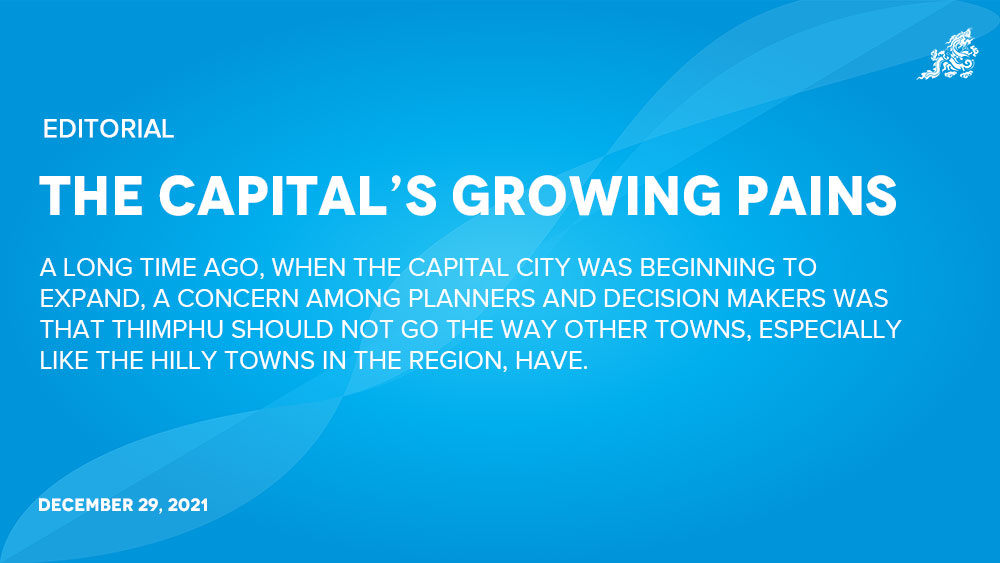A long time ago, when the capital city was beginning to expand, a concern among planners and decision makers was that Thimphu should not go the way other towns, especially like the hilly towns in the region, have.
They were aware of the congestion, the pollution, the traffic and the many ills of unplanned urbanization or uncontrolled growth. A master plan for the capital city envisioned how Thimphu should be. The plan was laid out, approved by the Cabinet and rolled out in phases from Changtagang to Ngabi Rongchu in the south. Thimphu residents were to live in the most beautiful and spacious city.
Fast forward to 2021 and everybody is complaining about the problems that were the concerns two decades ago. In other words, implementation was not in sync with what was drawn on paper.
Governance systems have changed, governments have changed, local leaders have changed, but what has not changed is the problems. What is clearly visible is that Thimphu is not the dream city that we planned to be by 2027. It planned to provide residents adequate space to walk, jog, cycle, relax and be close to nature while preserving the traditional look.
The reality is that there is no free space. Those jogging or walking have to fight with vehicles for space. In areas where land owners contributed land to create space, forget walkways, there are no roadsides. Residents are becoming health conscious, a good sign in times of increasing lifestyle diseases, but cycling is unsafe and the air is not clean. The only closeness to nature is the scare from bears prowling for garbage strewn around once habitats of the wild animals. The only traditional look we maintained are the few temples and monuments that are fast disappearing in a jungle of concrete buildings.
Thimphu’s elders cannot identify the town that was. The old names given to the bus stops are the only reminders of the old Thimphu. We have managed to destroy the city even with a grand master plan. Except for the name of the location, there is no identity to places in the city. It used to be Chang, Bap, Kawang in the past. Today, the so-called local area plans are the same with “shop cum bars,” “Momo corners” or the hardware outlets.
Meanwhile, the number of vehicles have outgrown not only infrastructure, but ideas and solutions. An overhead bridge has solved the congestion at the busy Olakha pedestrian crossing, but the problem has moved to the next crossing, near the helipad. Another overhead or underground passing would only shift the problem because we cannot look beyond treating the symptoms.
There are too many vehicles in Thimphu. According to the latest figure, as of November 30, there are 60,093 vehicles or one vehicle for every two people. The infrastructure is overwhelmed, rules are flaunted and the initiatives are lacking. Public transport is improving, but they cannot compete with other initiatives and strategies to make people buy more cars without much capital.
Thimphu has grown, modernised and become an attraction. This will add to the growing pains of congestion, pollution, garbage and urban poverty.


